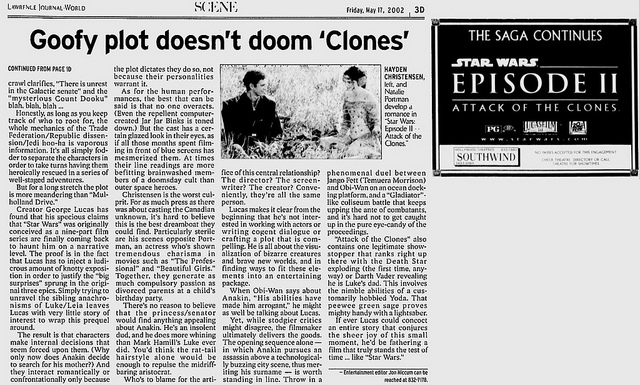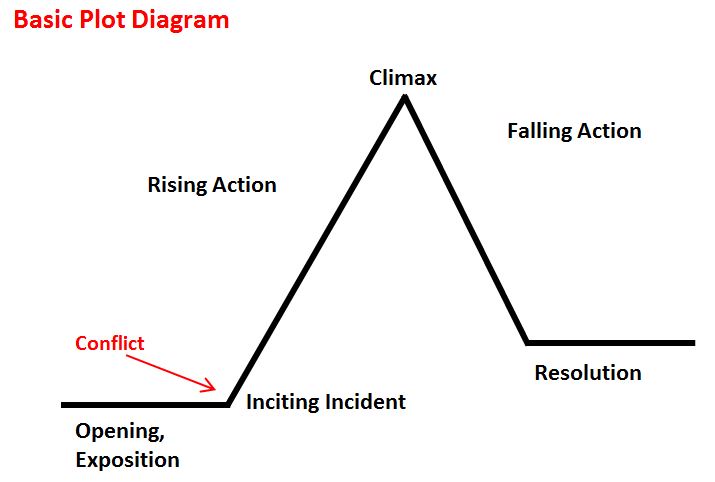
Source: Review - Attack of the Clones - Scene 3 - Goofy plot doesn’t doom Clones - Lawrence Journal-World - 2002-05-17, mMathab, Flickr
As we just learned, conflict comes in many forms. It creates tension and makes us wonder whether there will be a resolution and how the conflict will be resolved. How does the author make this work? The most effective way is with a plot structure.
Most stories follow a plot structure that includes six stages: exposition, the inciting incident, rising action, the climax, falling action, and the resolution. The most straightforward plots are called linear plots. They move the story from point A to point B and from exposition to resolution. In contrast, nonlinear plots vary this pattern by including flashbacks or multiple story lines. In this lesson, you are focusing on linear plots.
Let’s do a little refresher with a plot diagram to review the purpose of each stage of plot development.

Source: plotdiagram, IPSI
Each of the following stages of a plot develops the conflict in some way:
- The story begins with the exposition to establish the setting and the characters.
- Shortly thereafter, the inciting incident introduces the conflict revealing a protagonist, the good character who seeks a solution, and the antagonist, the rival who tries to prevent it.
- The suspense builds with each event contributing to the conflict, called the rising action.
- The climax presents the conflict at its most intense point; this is also the turning point of the story.
- In the falling action, the reader sees how the conflict could lead to the resolution.
- Finally, the resolution tells us whether the conflict is resolved, tying up any loose ends to complete the story.

Source: 3 pigs craft and flannel board story, momachels, Flickr
Remember the conflict in the story “The Three Little Pigs”? Let’s review the events of the story. Click on each of the plot elements in the diagram below to see how the events match up to the different elements.

In this children's tale, the linear plot is obvious. The events build upon each other, adding conflict. Once the conflict is resolved, the story ends.